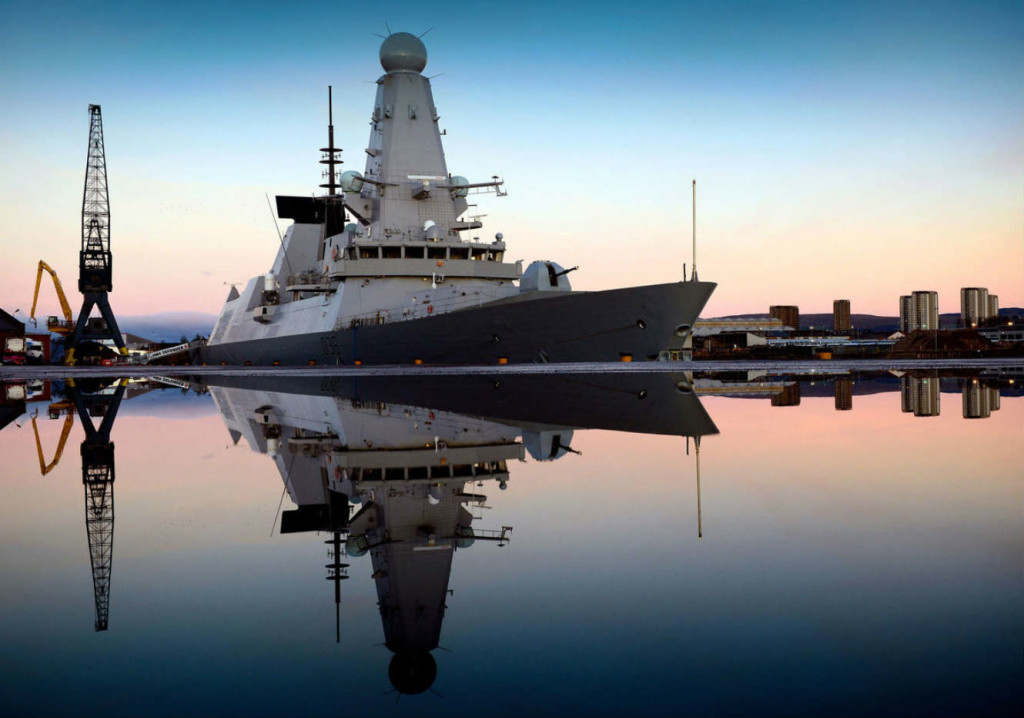The Decline and Fall of British Sea Power May Not Be Over

Commander Matt Schnappauf’s recent piece on the release of the British Strategic Defence and Security Review pointed out something that has been clear for a while now: The Royal Navy has been in steady decline for over a decade. He points out that the new document offers glimmers of hope, but does it really? Few of those who have identified this state of affairs have closely examined the Royal Navy’s decline as reflected by its abysmal force structure. All too often, analysts and pundits bemoan the current state of something without investigating how that state was reached.
So how did the Royal Navy get here?
First the numbers: In just the last five years the Royal Navy’s fleet of warships decreased by 17% (89 to 65). To put that in perspective, that would equate to the U.S. Navy of 2009 (283 ships at the time) falling to 234 ships today instead of the 272 in the current fleet. The Royal Navy force that sortied to the Falklands 33 years ago was bigger than the entire Royal Navy of today. It had three more operational aircraft carriers (versus none today, although two are under construction), patrol aviation (versus none today), and far more frigates and destroyers. Perhaps that is one reason the Argentinians have raised the issue of the Falklands/Malvinas again.
Compare this with Japan. The Japanese Maritime Self-Defense Force numbers 107 major warships, including logistics ships and submarines. They sail four helicopter destroyers (which are really light aircraft carriers), 13 patrol aviation squadrons, and the latest and most advanced AEGIS equipped destroyers, a submarine force, and they have a respectable amphibious warfare capability to boot. It has double the numbers of frigates and destroyers of the Royal Navy. Critics of this comparison might respond that Japan needs such forces because she is an island power. Exactly.
The decline of the Royal Navy is not just due to governmental parsimony and expensive weapons systems. It is just as much, if not more, the result of the ascendency of the British Army in the London budget battles during the wars in Iraq and Afghanistan. During these conflicts, Britain decided its army was more important to its interests than any other service. Short term operational commitments became long term policy. As long ago as 2008, respected commentators on British defense such as Michael Clarke, Colin Gray, Hew Strachan, and Sir Max Hastings lamented this prevailing trend and the flaws it revealed in Britain’s strategy. Nonetheless, the decline continued, perhaps through not-so-benign neglect and a poorly considered focus on the close fight instead of the long game. I know of another major power that has a similar problem, although not quite as acute.
Keeping a weather eye on the horizon, as all sailors do, it is true that there may be some good news in the offing with the most recent moves by the Cameron government vis-à-vis aircraft carriers, anti-submarine warfare ships, and aircraft. But if history and recent policy choices teaches us nothing, we must remain vigilant to the trends of decline that have been threatening our collective maritime security. After all, one cannot have a 1000 ship navy by oneself. Unless, perhaps, one is China.
John T. Kuehn is the General William Stofft Professor of Military History and has served on the faculty of the U.S. Army Command and General Staff College since July 2000, retiring from the naval service in 2004. His most recent book, published by Praeger, is entitled Napoleonic Warfare: The Operational Art of the Great Campaigns.
Image: Ministry of Defence, L(Phot) Will Haigh

